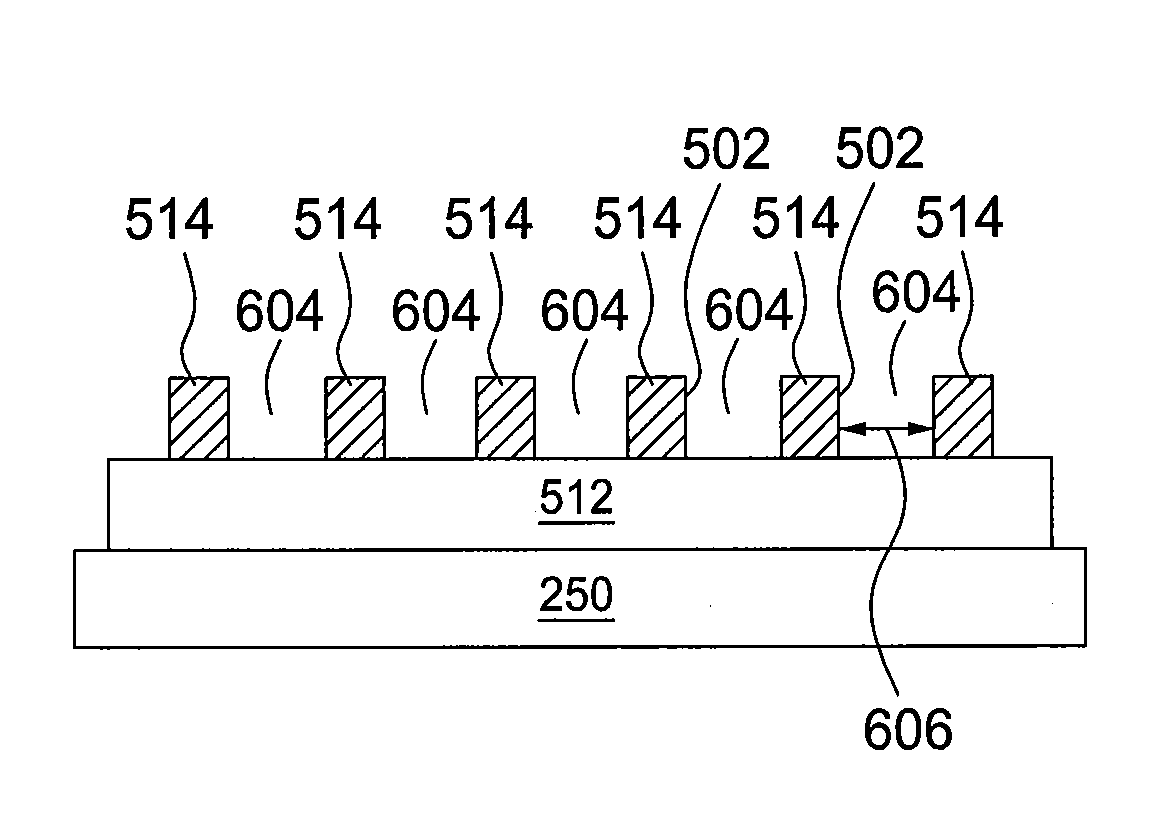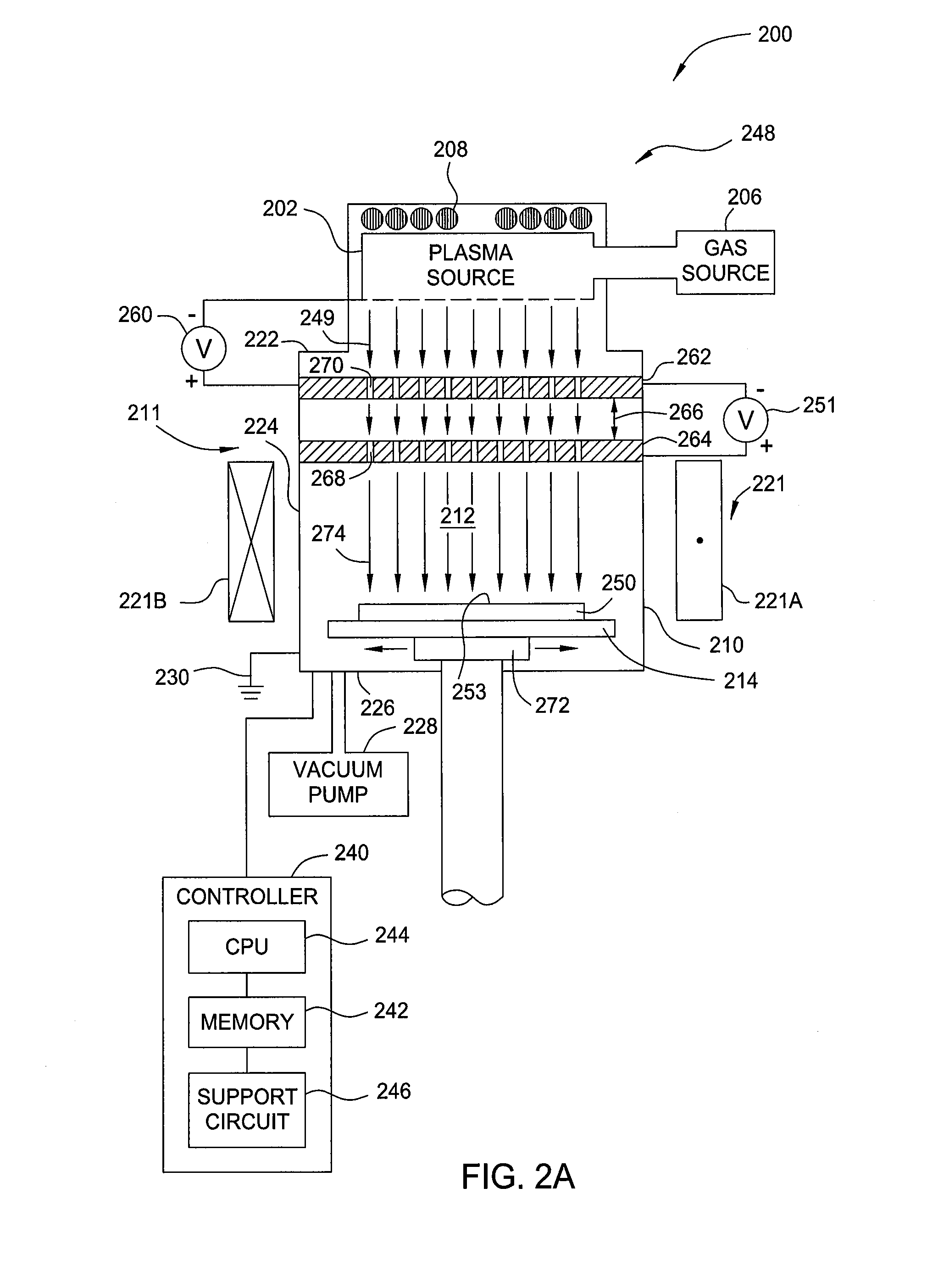Methods and apparatus for controlling photoresist line width roughness with enhanced electron spin control
- Summary
- Abstract
- Description
- Claims
- Application Information
AI Technical Summary
Benefits of technology
Problems solved by technology
Method used
Image
Examples
Embodiment Construction
[0026]Embodiments of the present invention include methods and apparatus for controlling LWR of a photoresist layer disposed on a substrate. The LWR of a photoresist layer may be controlled by performing an ICP process with enhanced electron spin control on a photoresist layer after an exposure / development process. The ICP process is performed to provide a chemical and electron grinding process on a nanometer scale with enhanced electron spin control to smooth the edge of the photoresist layer pattern with sufficient electron spin momentum, thereby providing a smooth pattern edge of the photoresist layer with minimum pattern edge roughness for subsequent etching processes. The ICP process with enhanced electron spin control may also be used to etch a target material disposed underneath the photoresist layer on the substrate subsequent to the photoresist line edge roughness minimization process.
[0027]FIG. 2A depicts a schematic, cross-sectional diagram of one embodiment of an ICP rea...
PUM
| Property | Measurement | Unit |
|---|---|---|
| Power | aaaaa | aaaaa |
| Magnetic field | aaaaa | aaaaa |
| Circumference | aaaaa | aaaaa |
Abstract
Description
Claims
Application Information
 Login to View More
Login to View More - R&D
- Intellectual Property
- Life Sciences
- Materials
- Tech Scout
- Unparalleled Data Quality
- Higher Quality Content
- 60% Fewer Hallucinations
Browse by: Latest US Patents, China's latest patents, Technical Efficacy Thesaurus, Application Domain, Technology Topic, Popular Technical Reports.
© 2025 PatSnap. All rights reserved.Legal|Privacy policy|Modern Slavery Act Transparency Statement|Sitemap|About US| Contact US: help@patsnap.com



